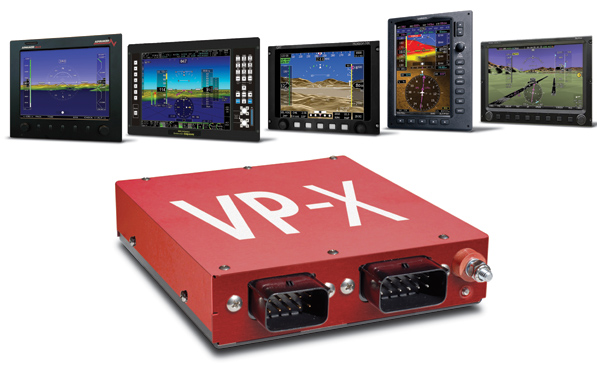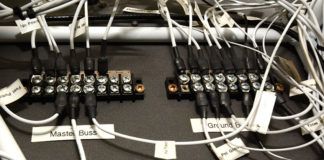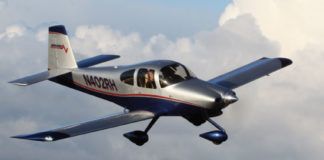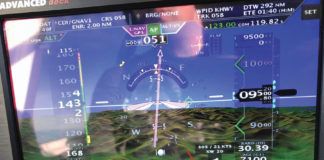Marc Ausman’s excellent idea in the Vertical Power line of electrical system devices may just have come too early. You might remember the initial iterations, the VP-200, the VP-100 (now discontinued) and the lower-cost VP-50. The idea behind the VP systems was actually two great ideas bundled into one. For starters, the VP devices took the place of virtually all circuit breakers and fuses in an airplane, and provided both simplification of wiring-in essence, almost every electrical device gets juice from one box-and sophisticated system monitoring. Stuff way beyond what you could expect from mere circuit breakers and fuses.
In addition, the first VP offerings were allied to a dedicated display screen that provided both a broad and very detailed view of the electrical system at any point in the flight-sort of a geek’s peek at the electron flow. But what VP cofounder Ausman was most proud of was the contextual power management idea. He realized that with all the modern instruments in the airplane, it was possible to determine the aircraft’s condition-startup, taxi, takeoff, climb, cruise, descent, landing, taxi-in and shutdown. His reasoning was that pilots would benefit from a certain amount of system automation to reduce workload. Wouldn’t it be cool if the system knew when you needed the fuel boost pump, for example, and automatically turned it on and off according to the flight state?

Vertical Power’s control box (left) sends circuit information to five brands of EFIS.
These lofty concepts might have been lost on the general pilot population. Ausman, ambitious and determined, finally figured that the growth of the VP concept wasn’t happening as anticipated, and he recognized from pilot feedback that one of the more attractive aspects of the technology was the electronic circuit breaker-alongside the ability to concentrate and rationalize the physical layout of the power-distribution system. Could it be that the underlying technology was being overshadowed by the automation, and causing some buyers to dismiss VP as overly complicated? Perhaps.
His response was the VP-X, a brand-new box that takes a slightly different tack. Where the VP-200 used a combination of automation and soft keys to manage the major electrical systems-avionics, lights, boost pumps, landing gear relays, trim and more-the VP-X hands control of these devices to a sophisticated carbon-based analog unit: You. Each circuit is controlled by a user-installed switch that leads right back to the VP-X controller. The switches carry almost no current, so they can be small and light, and don’t need big wires; they do nothing more than tell the processor inside the shiny red box what to do with each circuit. You can install the switches on the panel or control stick, wherever you want.
Ausman and his engineers have retained some of the smart technology from the VP-200. For example, the trim system has access to indicated airspeed from a wide range of EFIS (electronic flight instrument system) types, and can adjust trim speed relative to vehicle speed. The VP-X can also inhibit flap movement above the white arc, and can change the landing-light configuration from wig-wag in flight to steady-on when in the landing configuration. Management of trim and flaps involves no mechanical relays, and includes features such as trim runaway protection, trim position limiting and flap-motor braking.
Because nearly everything in the airplane is now powered by one box, you’d think a massive single-point failure had just landed in your lap. Ausman and company thought of that, too. With the VP-X, there are parallel, independent power-distribution systems and controllers inside the box. You can define which of the individual systems are on each controller, which then allows you to separate critical items so that failure of one half of the system will not create a hazard.
Even better: Setup of the system is all done on a PC. You determine the number of circuits, which pins they live on, how much current they need, the nature of the alarms and so on-all on the computer. Need to add a circuit? Make the change on the configuration file, add a wire to the VP-X’s output connector, and there you go.
If you’re familiar with the VP-200 you’re probably thinking: Well, this is all neat, but how do you know if there’s a system fault if you don’t have the VP-200’s screen? And here’s where it gets really cool. Ausman has worked with all of the major EFIS manufacturers to create special pages on the instruments that depict a host of VP-X parameters. A simple serial connection between the VP-X and your EFIS is all that’s needed, along with the latest version of the EFIS software to support the VP-X. Then, you’ll have a dedicated screen that shows each circuit, the name of the device it supplies, the trip point of the electronic circuit breaker, the actual current consumption of the circuit, and various fault warnings-including opens and shorts. It’s all there, in one place, and really well executed in the EFIS screens I’ve seen.
But here’s the amazing part of this story, at least to me. Ausman managed to convince the top five EFIS manufacturers to support the VP-X. Advanced Flight Systems, Dynon, Grand Rapids (GRT), Garmin and MGL all provide support (or have pledged support) for the VP-X. The surprise on this list is Garmin. From my beta testing of the G3X, I have come to know the Garmin engineers and software guys fairly well, and to say they’re a competitive lot is our first understatement of the month. (There may be more later.) This nature along with a hint of NIH (not invented here) led me to believe that Garmin wouldn’t join the game. But then came the announcement of the cooperation followed by a very slickly crafted control screen, which told me it was real. By cajoling these five manufacturers to support the VP-X, Ausman has helped assure its success.
An Energetic Response
This month we begin yet another new column, penned by Dean Sigler, whose association with the CAFE Foundation gives him not only perspective on what the organization does, but also access to some of the most exciting new technologies we’re going to see in the next few years. Sigler’s first column recaps the efforts of the CAFE Foundation.
Our goal with this column is to give regular voice to emerging propulsion technologies, an area that’s about to be more widely exposed by the CAFE Foundation’s Green Flight Challenge this summer (July 11-17 in Santa Rosa, California). Expected technologies include electric aircraft, designs run on biodiesel and ethanol, and various forms of hybrid powerplants. Sigler will be there for the duration, and I intend for him to give us details on each team’s efforts. What’s more, he’ll be watching developments in alternative propulsion at the major airshows this year; his column will help provide some insight into this exciting new world.

![]()
Marc Cook has been in aviation journalism for 22 years and in magazine work for more than 25. He is a 4400-hour instrument-rated, multi-engine pilot with experience in nearly 150 types. Hes completed two kit aircraft, an Aero Designs Pulsar XP and a Glastar Sportsman 2+2.













